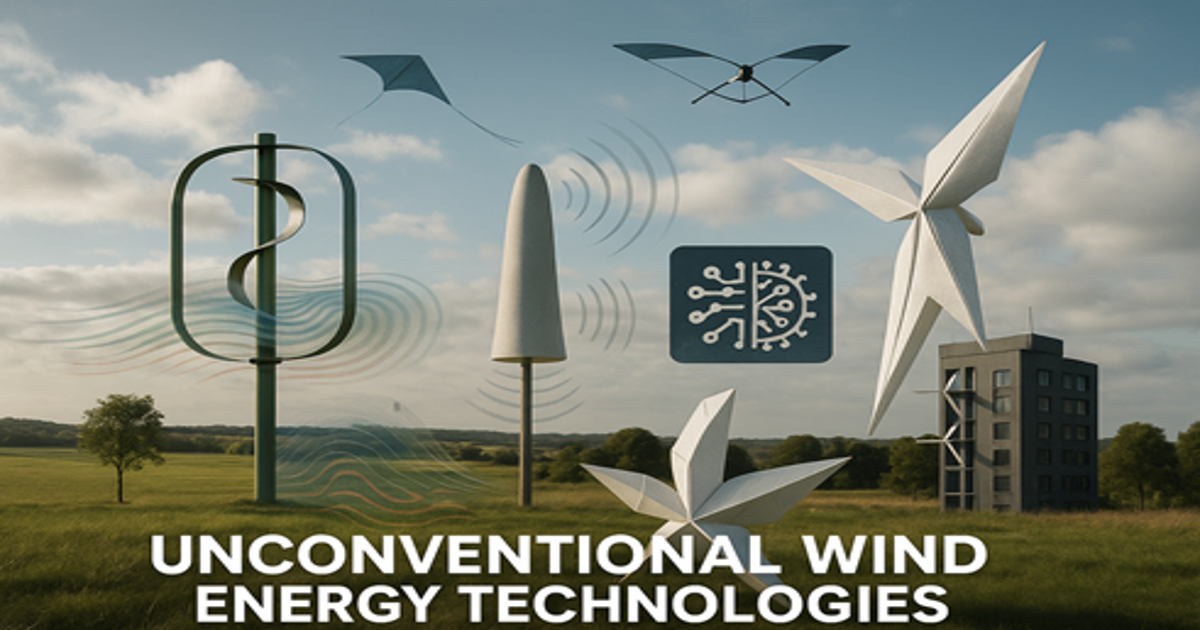Numerical Modelling of Unconventional Wind Turbines
A special issue of Energies (ISSN 1996-1073). This special issue belongs to the section "A3: Wind, Wave and Tidal Energy".
Deadline for manuscript submissions: 5 December 2025 | Viewed by 78

Special Issue Editor
Interests: thermofluids; computational fluid dynamics; turbomachinery; wind turbines; multiphase flows; aerodynamics; renewable energy
Special Issues, Collections and Topics in MDPI journals
Special Issue Information
Dear Colleagues,
Driven by the need for adaptable, cost-effective and environmentally compatible solutions, the evolution of wind energy technology is entering a new phase. While horizontal axis wind turbines have dominated the commercial landscape for decades, they are not always ideal for every location or application, particularly in urban or remote settings where wind conditions are variable, space is limited, or noise and visual impact are concerns. In response to these challenges, a diverse range of unconventional wind turbine designs has emerged. These include, among others, vertical axis turbines, bladeless systems, airborne devices and integrated architectural solutions. Such technologies aim to overcome the limitations of conventional systems and tap into previously underutilized wind resources.
This Special Issue seeks to disseminate original research articles, reviews and case studies on the design, modelling, performance, optimisation and real-world deployment of unconventional wind turbines to promote fundamental, multidisciplinary and applied research. This Special Issue offers a major opportunity to report advancements in unconventional wind turbine technologies with the aim of realizing their worldwide potential to harness both onshore and offshore wind energy. This Special Issue covers, but is not limited to, a wide range of topics, including the following:
- Vertical axis wind turbines;
- Bladeless wind energy systems;
- Airborne wind energy technologies;
- Ducted, shrouded or diffuser-augmented turbines;
- Architectural and building-integrated wind turbines;
- Bio-inspired or origami-based turbine blades;
- Experimental investigations and wind tunnel testing;
- CFD simulations and aerodynamic optimization;
- Structural dynamics and sustainable materials;
- Hybrid renewable systems combining unconventional wind with solar, etc.;
- Techno-economic, environmental and lifecycle assessments;
- The application of AI for unconventional wind turbine design and optimisation.
Dr. Taimoor Asim
Guest Editor
Manuscript Submission Information
Manuscripts should be submitted online at www.mdpi.com by registering and logging in to this website. Once you are registered, click here to go to the submission form. Manuscripts can be submitted until the deadline. All submissions that pass pre-check are peer-reviewed. Accepted papers will be published continuously in the journal (as soon as accepted) and will be listed together on the special issue website. Research articles, review articles as well as short communications are invited. For planned papers, a title and short abstract (about 100 words) can be sent to the Editorial Office for announcement on this website.
Submitted manuscripts should not have been published previously, nor be under consideration for publication elsewhere (except conference proceedings papers). All manuscripts are thoroughly refereed through a single-blind peer-review process. A guide for authors and other relevant information for submission of manuscripts is available on the Instructions for Authors page. Energies is an international peer-reviewed open access semimonthly journal published by MDPI.
Please visit the Instructions for Authors page before submitting a manuscript. The Article Processing Charge (APC) for publication in this open access journal is 2600 CHF (Swiss Francs). Submitted papers should be well formatted and use good English. Authors may use MDPI's English editing service prior to publication or during author revisions.
Keywords
- unconventional wind energy systems
- bladeless wind turbines
- airborne wind turbines
- bio-inspired blades
- morphing blades
Benefits of Publishing in a Special Issue
- Ease of navigation: Grouping papers by topic helps scholars navigate broad scope journals more efficiently.
- Greater discoverability: Special Issues support the reach and impact of scientific research. Articles in Special Issues are more discoverable and cited more frequently.
- Expansion of research network: Special Issues facilitate connections among authors, fostering scientific collaborations.
- External promotion: Articles in Special Issues are often promoted through the journal's social media, increasing their visibility.
- Reprint: MDPI Books provides the opportunity to republish successful Special Issues in book format, both online and in print.
Further information on MDPI's Special Issue policies can be found here.





